Pest infestations happen, and when they do, most people are usually oblivious to the presence of the unwanted invasion…
Until they fall victim to an attack.
Generally, the sight of a single pest, such as a termite, can signal the presence of more.
Take bed bugs, for example.
The short answer to this question is…
Seeing a single bed bug in your home means that you probably have an infestation.
Page Contents:
What Are Bed Bugs?
Bed bugs are tiny parasites that live on human blood. They have a flat, round body, and are about as big as an apple seed.
These creatures don’t have wings, and they cannot fly or jump, so they usually travel through hitchhiking.
Whether it be on your clothes, bags, or somewhere on your body…
Bed bugs LOVE to travel with their hosts.Bed bugs are mostly nocturnal, but more aggressive bed bugs will feed in broad daylight.
These insects are also experts at concealing themselves. With a desire to stay close to their host, common hiding spots are typically in the bedroom.
These insects can be found in your:
- headboard cracks
- mattress seams
- box springs
- pillowcases
- behind pictures
- Under furniture
Where Do They Come From?
In the United States, the bed bug population has been steadily growing since 2004…
And has reached EPIDEMIC status.
The states with the highest infestation rates include:
So, if you live in the America, there’s a good chance that you’ll personally experience, or know someone who has experienced bed bugs at some point in their lives.

But how do you get bed bugs anyway?
If you’re a frequent traveler, you may be an unwitting carrier of bed bugs.
These bugs can latch on to your clothing, luggage, backpacks, and suitcases.
People who commonly shop in thrift shops may also bring bed bugs into their homes by buying second-hand or used items such as furniture.
Bed bugs can be found virtually anywhere…
Whether it be:
- Houses
- Apartments
- Hotels
- Hospitals
- Movie theaters.
How to Identify Bed Bugs from Other Bugs
Bed bugs are often confused with other insects.
If you see a bug on your pillow, you should properly identify it before making rash decisions.
Here are some examples of insects that are confused with bed bugs:
- Unlike bed bugs, this blood-sucking parasite mostly prefers animals rather than humans. Although they do bite people…Fleas live on the bodies of animals and you can only be bitten if you live with pets.
- Ticks are also parasites that tend to feed on animal blood. They look like tiny spiders and are not inclined to attack homes.
- Spider Beetles look a lot like bed bugs. But unlike bed bugs, spider beetles tend to stay in pantries and go for your food.
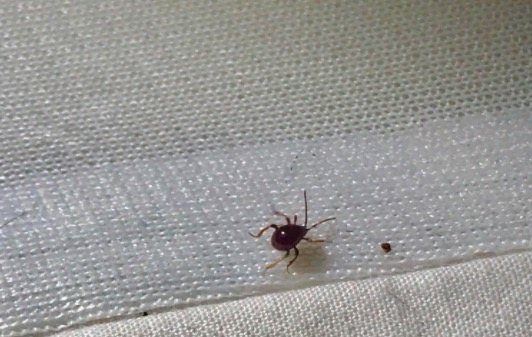
Click here for the complete list of creatures that are confused with bed bugs.
How to Spot an Infestation
Once you suspect an infestation, there are a few signs you can look for to confirm.
Some common indicators of an infestation include:
Bite marks:
The first sure sign of a bed bug infestation is the presence of bites on your body.
These bites can appear anywhere, as long as it’s on exposed skin.
Common places bed bugs bite are:
- Ankles
- Shoulders
- Arms
- Neck
- Upper back.
Since bed bugs usually bite more than once, it’s normal to find 2-3 bites in a line, or clustered together.
Bloodstains:
Next to the bite marks, you may also spot blood stains on your pillowcase, blanket, or bedsheet.
When a bed bug bites, you won’t feel anything due to the numbing agent present in their saliva.
Fecal stains:
Bed bugs often defecate immediately after they feed.
And since the insects only feed on blood, their excrement is purely liquid.
Fecal stains look like small black dots ranging from dark brown to black.
Shed skin:
Like most insects, bed bugs undergo phases of molting as they grow.
Though bed bugs can hide, they tend to leave their shed exoskeleton behind.
Eggs and eggshells:
Just like their exoskeletons, bed bugs tend to leave their eggs behind.
Bed bug eggs are quite small, almost the size of a pinhead.
But since they often appear in clusters, they’re NOT extremely difficult to find.
Bed bug eggs can be spotted in places where bed bugs like to hide such as cracks and fissures.
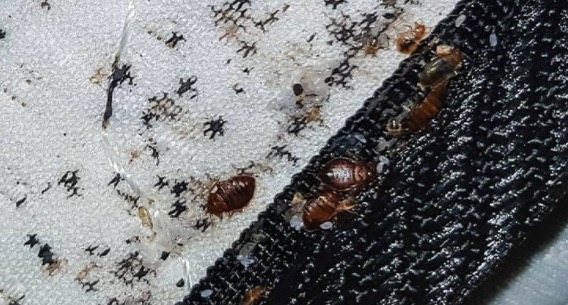
Musty smell:
Bed bugs tend to emit odor from their scent glands that may stick to the places they’ve been in. Check your bed and the surrounding area for a scent that is similar to mold.
If you don’t find an obvious source, then it is a likely sign of an infestation.
Bed bugs are not confined to the bedroom. They are also often found in the living room, hiding between the spaces in couches and armchairs.
A bookshelf is another common hiding spot, as well as door hinges and window ledges.
Bed Bug Treatment Methods
After confirming the presence of bed bugs, the best thing to do is to call for extermination services.
But of course…
There are also some actions you can take to kill bed bugs instantly.
Here’s a look at what pest control experts consider the most effective ways of eradicating a bed bug infestation:
HEPA Filter Vacuum
In some cases, especially when a bed bug infestation is contained in a single area, the solution can be as simple as a thorough vacuuming.
This is one of the easiest and most effective DIY methods for treating bed bugs.
It’s especially effective when the vacuum is outfitted with a HEPA-certified filter, which can prevent bed bugs in all life stages…
(eggs, nymphs, or adults)
From becoming airborne.

Laundry and Encasement
This method is important for helping to reduce the severity of an infestation, but it likely won’t solve it all on its own.
This involves two steps:
Step 1: Laundry – Wash all of your clothes and bedding, and then dry on high heat.
Step 2: Encasement – This involves putting a special mattress encasement over your bed and box spring. That way bed bugs cannot settle and hide inside your mattress, and any bed bugs already inside will starve to death within 2 – 3 months.
Heat Treatment
Plain and simple – Heat kills bed bugs.
Though a dryer does the job on your clothes and sheets you cannot throw your carpets, furniture, and curtains in the dryer.
The problem is these can all be prime hiding spots for bed bugs, so the dryer won’t fully solve your problem.

Through a professional heat treatment, a specialist will bring in industrial heaters and air circulators to raise the temperature of the infested areas.
The area could reach temperatures up to 140 degrees Fahrenheit for several hours.
This method is natural and environmentally friendly. The only downside is it can be more expensive than other treatment methods.
Conventional Treatment (Chemicals)
This is considered the industry standard for bed bug eradication, and involves carpet-bombing the living space with different chemicals and insecticides.
There are more than 300 chemical products approved by the EPA to exterminate bed bugs.
This method has been effective in killing bed bugs for decades.
Although in the past 20 years…
Bed bugs have evolved thicker skin to defend themselves against these chemical products.
As their resistance to common insecticides grows, pest control professionals will need to get more innovative in coming up with ways to combat bed bugs.

Is it Even Possible to Have Just One Bed Bug?
The sight of even just one bed bug strolling across your mattress or climbing on a bed can cause panic.
The stigma that’s attached to bed bugs is enough to make people throw out perfectly good furniture.
So the question remains…
Is there any possibility of this one bed bug being an outlier?
It’s impossible to make the claim that only one bed bug guarantees an infestation.
It’s possible that you just saw the presence of one male or a female that has not laid eggs yet.
Either way it’s best to air on the safe side, so you should take necessary precautions and implore treatment methods as if there was an infestation.
Since these insects are great at hiding there are likely other bed bugs or eggs that you can’t see.
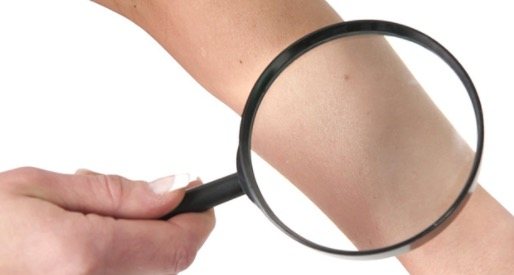
According to a study by the University of Arkansas, a lone female bed bug can reproduce to an infestation of 500 or more bed bugs in 2 months.
Also keep in mind…
That even if you don’t find bites, that doesn’t mean you don’t have bed bugs. Sometimes skin reactions can take days to occur on your body.
What If You Can’t Find Additional Bed Bugs?
If you properly inspect the premises and you simply can’t find more bed bugs after the first sighting, this is good news.
You likely at the worst…
Have a very mild infestation.
Therefore, to prevent your life from turning upside down. You should take the following actions:
Arrange a professional inspection:
Even though you couldn’t find any more bed bugs, let’s give the pros a chance to verify this.
The experts are experienced and know some of the obscure places bed bugs can come from.
Be careful when you travel:
Don’t use public transportation unless you have to, and make sure to examine any temporary residences you’re staying before you go to bed.
Keep your home clean:
Having a clean home doesn’t necessarily reduce your chances of catching an infestation.
But it means you’ll be able to spot an infestation earlier before it has a chance to quickly spread.

How to Deal with Bed Bug Bites
Bed bug bites are relatively harmless. However, it is always best to treat them seriously because like any other injury, they could become dangerous if untreated.
In fact…
Bed bug bite allergies exist, and a person suffering from one may go into anaphylactic shock.
If you ever receive bed bug bites in your apartment or hotel room, you can always file for a personal injury case.
Property owners are required to deliver a safe environment for their tenants and guests, and exposing them to bed bugs is a violation of that.
Therefore a lawsuit could be your best bet, as you may receive compensation for your bed bug related injuries.
Click here for the average value of a bed bug lawsuit settlement.
To learn more about your potential bed bug case, don’t hesitate to contact us now.
Get your FREE consultation. NO FEES unless you win your case.
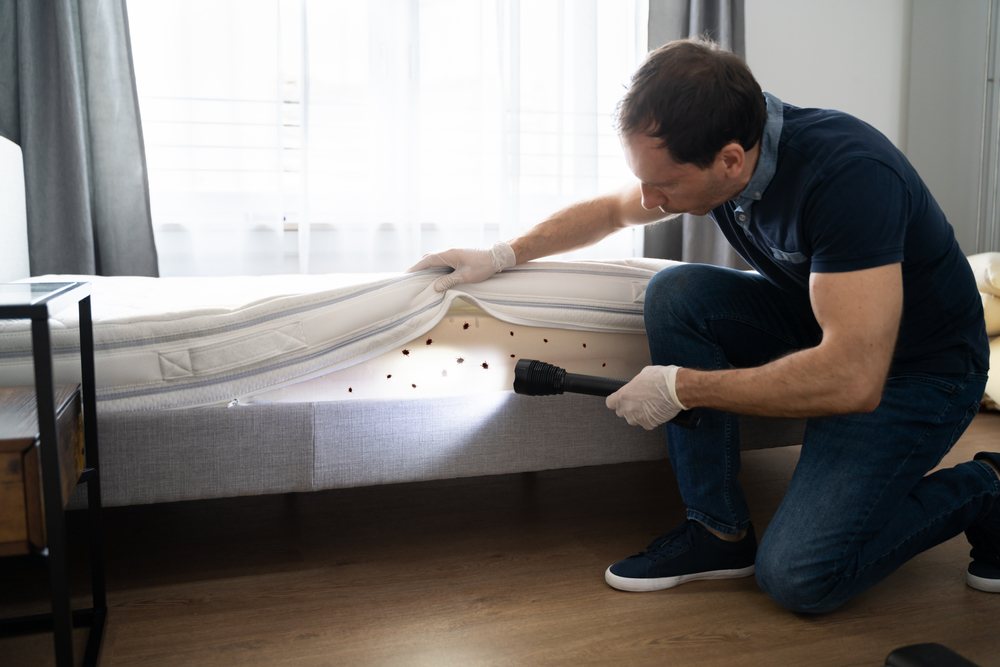



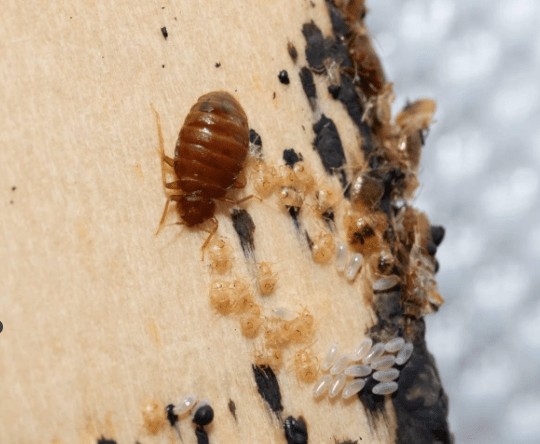

Awesome post! Keep up the great work! 🙂